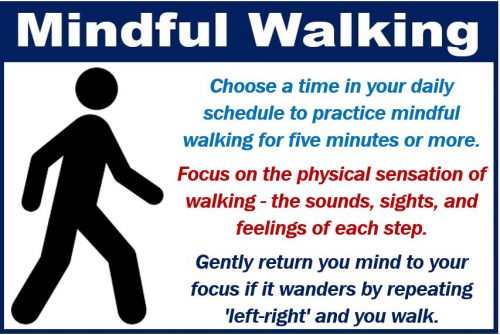What is mindfulness? Definition and examples
Mindfulness is a state of being totally aware of what is happening inside and outside ourselves, second by second. It is the state of being mindful. In other words, being in a nonjudgmental state of complete or heightened awareness of our thoughts, emotions, and experiences. That awareness is on a moment-to-moment basis, i.e., on what is happening now.
As a modern, Western practice, mindfulness is founded on Zen and modern Vipassana. The Vipassana movement is a branch of modern Burmese Theravāda Buddhism.
It involves the training of ‘sati,’ which translates as “moment to moment awareness of present events.” It also means “remembering to be aware of something.”
Prof. Mark Williams
Professor Mark Williams, who founded the Centre for Mindfulness Research and Practice at the University of Wales Bangor, said:
“It’s easy to stop noticing the world around us. It’s also easy to lose touch with the way our bodies are feeling and to end up living ‘in our heads’ – caught up in our thoughts without stopping to notice how those thoughts are driving our emotions and behavior.”
“”An important part of mindfulness is reconnecting with our bodies and the sensations they experience. This means waking up to the sights, sounds, smells and tastes of the present moment. That might be something as simple as the feel of a banister as we walk upstairs.”
Prof. Williams is also a Founding Director and Honorary Senior Research Fellow at the Oxford Mindfulness Centre.
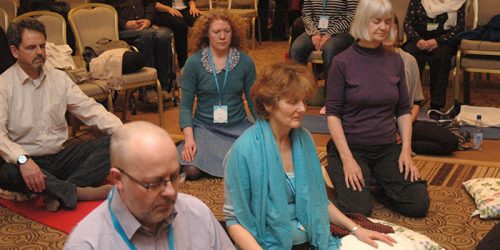
Prof. Williams says that mindfulness also includes allowing ourselves to see the present moment more clearly. When we can do that, it can have a positive effect on how we see our lives and ourselves.
Mindfulness – helping mental well-being
The UK’s NHS says that becoming more aware of the present moment can help people enjoy the world around them. It can also help them understand themselves better. NHS stands for National Health Service.
When you become more aware of the present moment, you start to experience afresh things that you had previously taken for granted.
Mindfulness also allows you to become more aware of the continuous flow of feelings and thoughts that you experience. It allows you to see how we can all become entangled in that stream. Often, becoming entrangled occurs in unhelpful ways.
You can then stand back from your thoughts and begin to see their patterns. It is possible to train yourself to be aware of when your thoughts are taking over. You also become aware that thoughts are just ‘mental events.’ Those thoughts do not have to control you.

Thoughts that are difficult to let go
According to Prof. Williams:
“Most of us have issues that we find hard to let go and mindfulness can help us deal with them more productively. We can ask: ‘Is trying to solve this by brooding about it helpful, or am I just getting caught up in my thoughts?'”
“Awareness of this kind also helps us notice signs of stress or anxiety earlier and helps us deal with them better.”
Prof. Christiane Spitzmueller, from the University of Geneva, says that employees who feel they are not in control of their work, can replenish their resources by practicing mindfulness.
UK’s National Institute for Health and Care Excellence
NICE (National Institute for Health and Care Excellence) is an executive non-departmental public body of the UK’s Department of Health. It publishes health guidelines.
NICE mentions mindfulness twice in its guidance “Depression in adults – recognition and management.” It recommends:
- “Mindfulness-based cognitive therapy for people who are currently well but have experienced three or more previous episodes of depression.”
- “Mindfulness-based cognitive therapy should normally be delivered in groups of 8 to 15 participants and consist of weekly 2-hour meetings over 8 weeks and four follow-up sessions in the 12 months after the end of treatment.”
Steps to mindfulness
These five steps to make you more mindful were sourced from Mindful.org:
Breathing exercise
Breathe in, and be aware that this is your ‘in-breath.’ Then breathe out, and be aware, that this time it is your ‘out-breath.’
According to Mindful.org:
“Just recognize: this is an in-breath, this is an out-breath. Very simple, very easy. In order to recognize your in-breath as in-breath, you have to bring your mind home to yourself.”
“What is recognizing your in-breath is your mind, and the object of your mind—the object of your mindfulness—is the in-breath. Mindfulness is always mindful of something.”
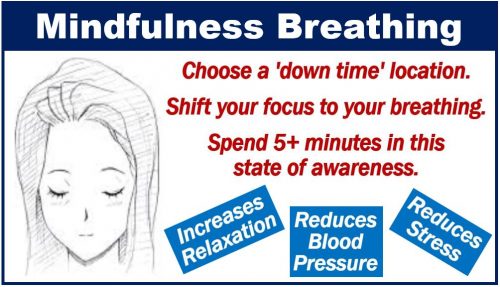
The following quote comes from the Greater Good Science Center at the University of California, Berkeley:
“The most basic way to do mindful breathing is simply to focus your attention on your breath, the inhale and exhale. You can do this while standing, but ideally you’ll be sitting or even lying in a comfortable position.”
“Your eyes may be open or closed, but you may find it easier to maintain your focus if you close your eyes.”
Concentration
Follow your in-breath mentally from start to finish. If it lasts four seconds, your mindfulness will therefore be four seconds long. Do the same when you breathe out.
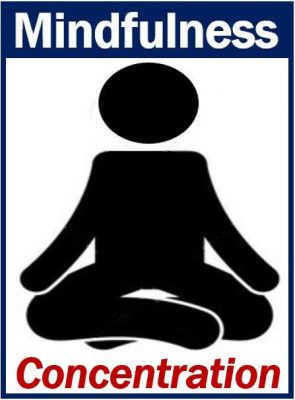
It does not matter how long your short each breath is. What matters is that you are 100% mindful of them all the time.
If you concentrate, your breathing will probably naturally slow down and become deeper. You become your in-and-out breaths.
Be aware of your body
Be aware of your body during your in-and-out breaths. During each breath, focus on your body’s existence and that it is there. As you bring your mind back to your body, they fuse and become one reality. At this point, you are much more aware of the here and now.
MindfulnessExercises.com says the following about body awareness:
“Body awareness exercises help to relieve stress by allowing us to become more mindful of how our body reacts to external stimuli. It can be a meditative practice that strengthens the link between the mind and the body, allowing you to better modulate the ebbs and flows of both, thus acting as a sort of informal biofeedback monitor.”
Releasing tension
When you are completely aware of your body, you will sense some stress, i.e., pain and tension, in your body.
The pain and tension may have been building up over the years. While your body suffers, your mind has not been in the right place to help get rid of it. It is important to know how to release that tension.
You can do this anywhere if you have a moment. Go through the first three steps mentioned above and then release the tension.
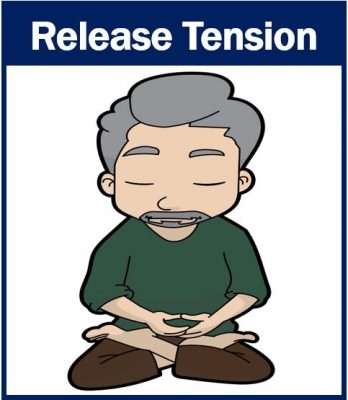
Mindfulness while you walk
With walking meditation, you should just let it happen. You do not need to make any effort. Enjoy each step as you move forward.
